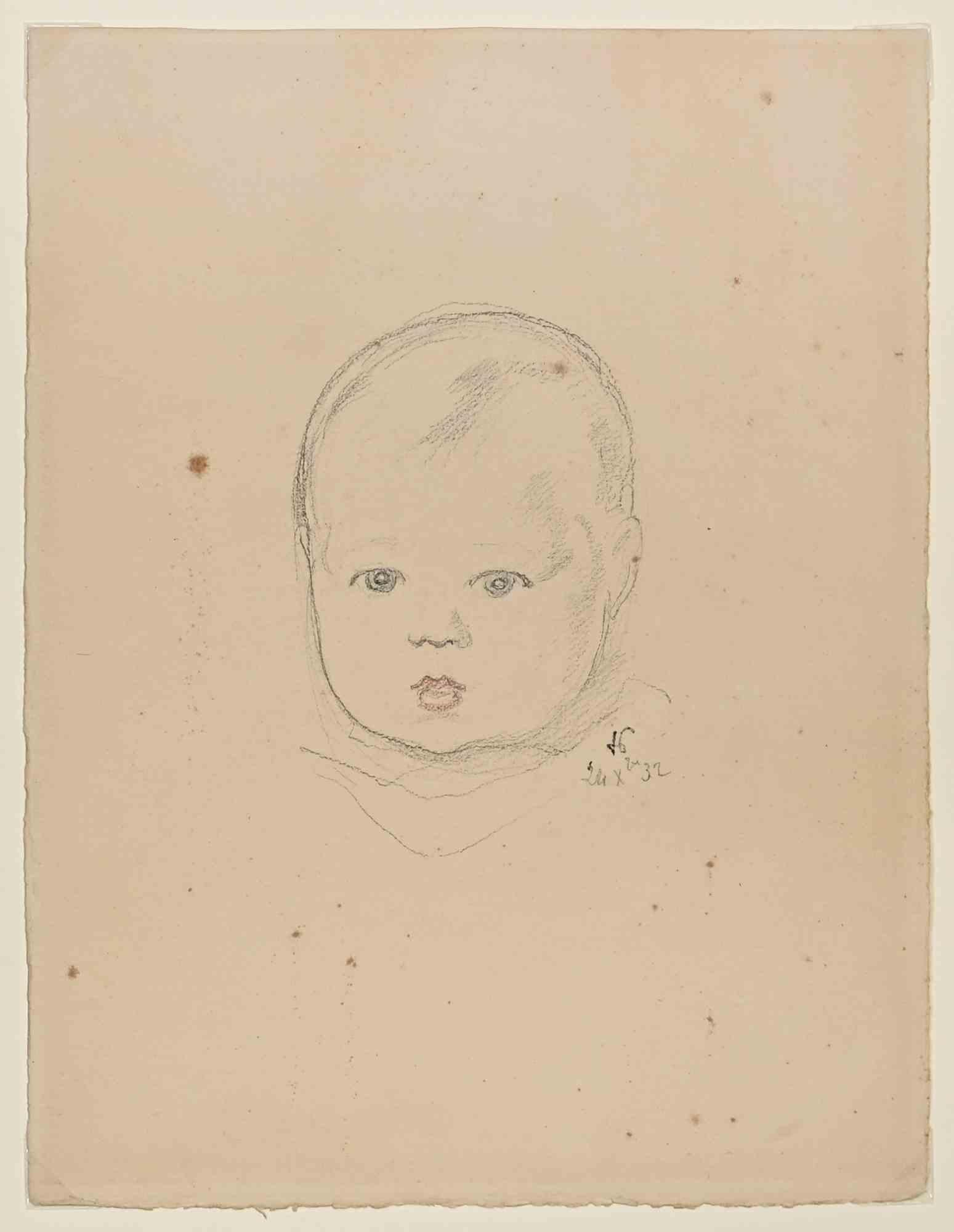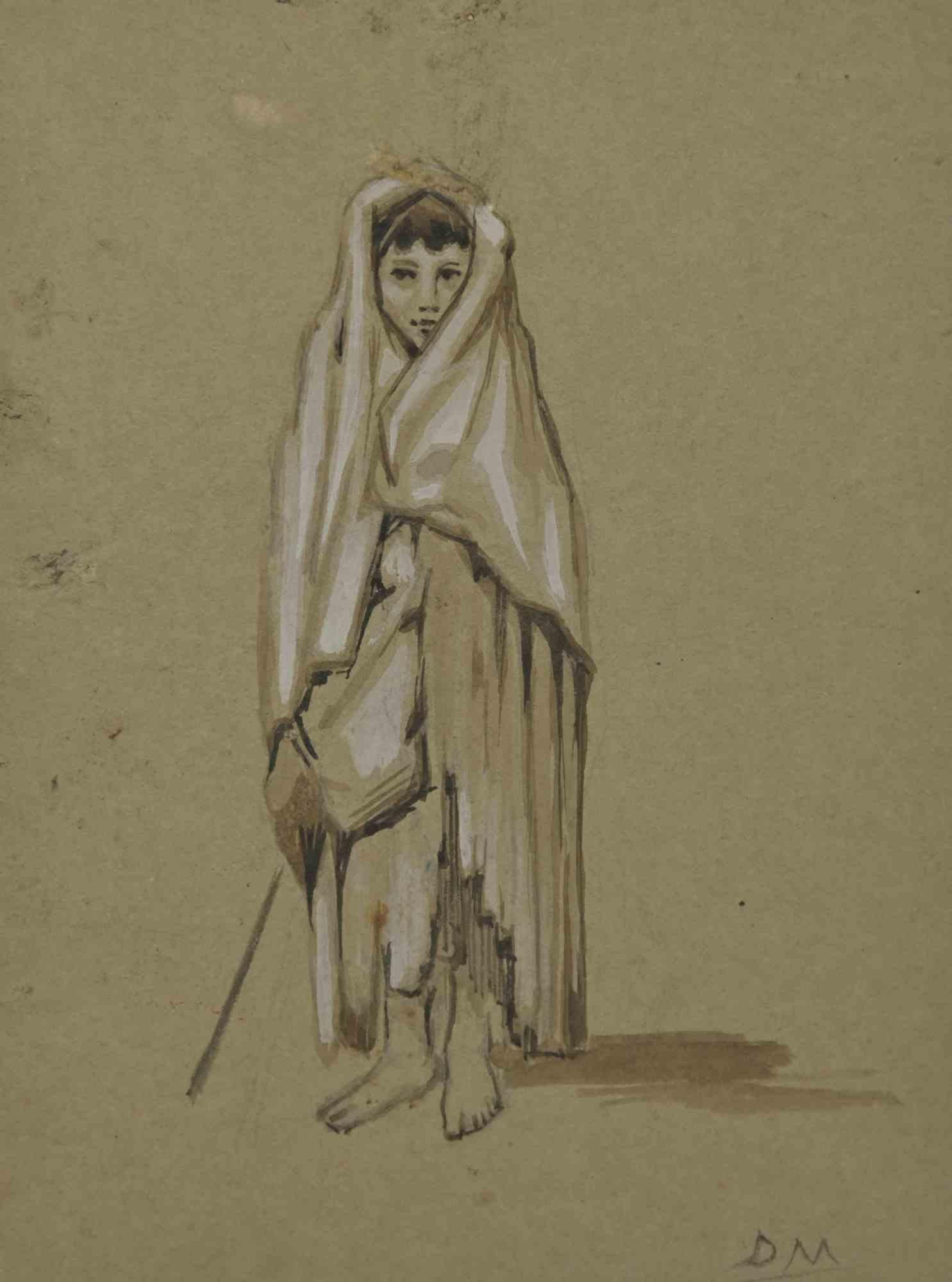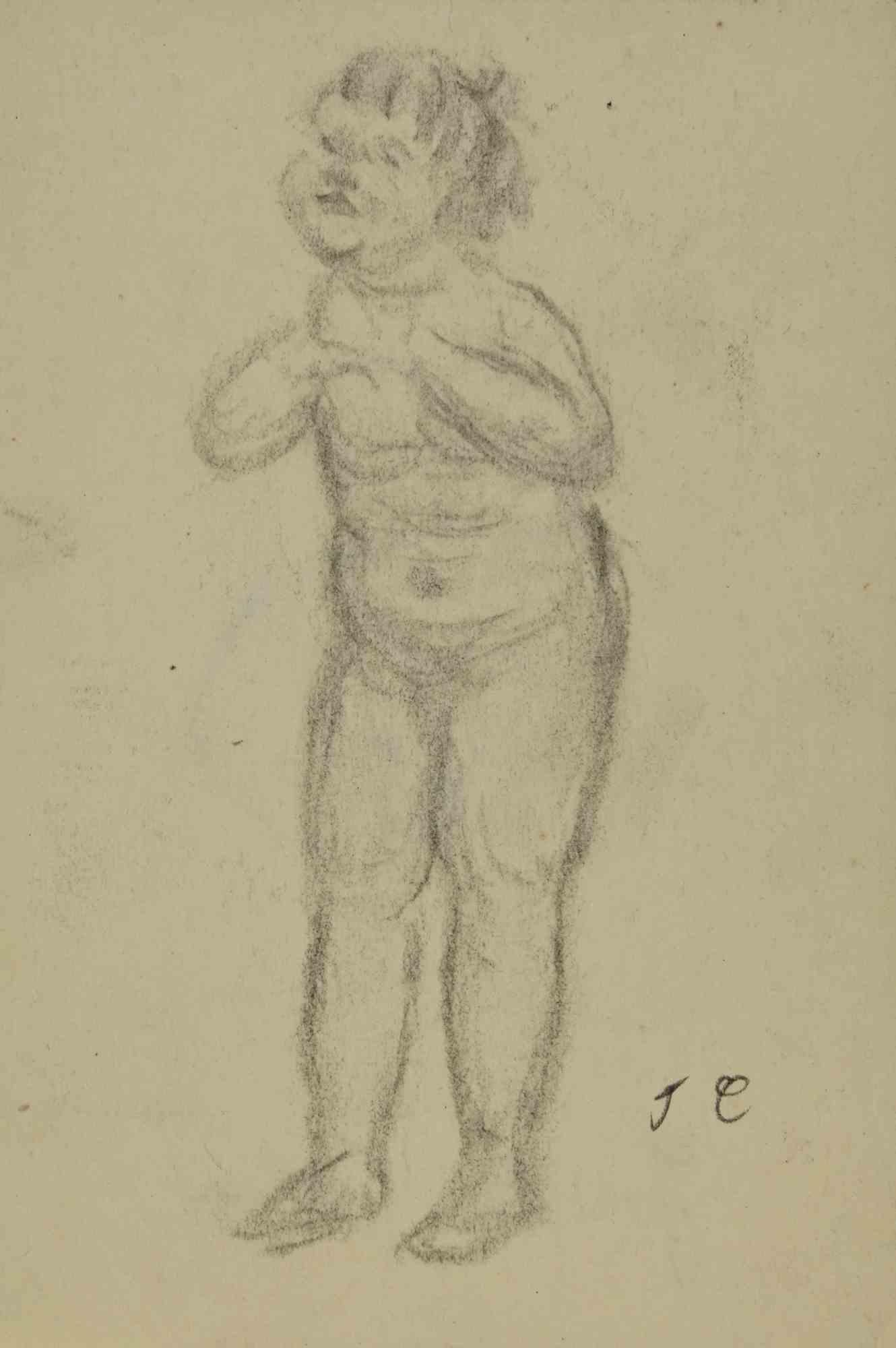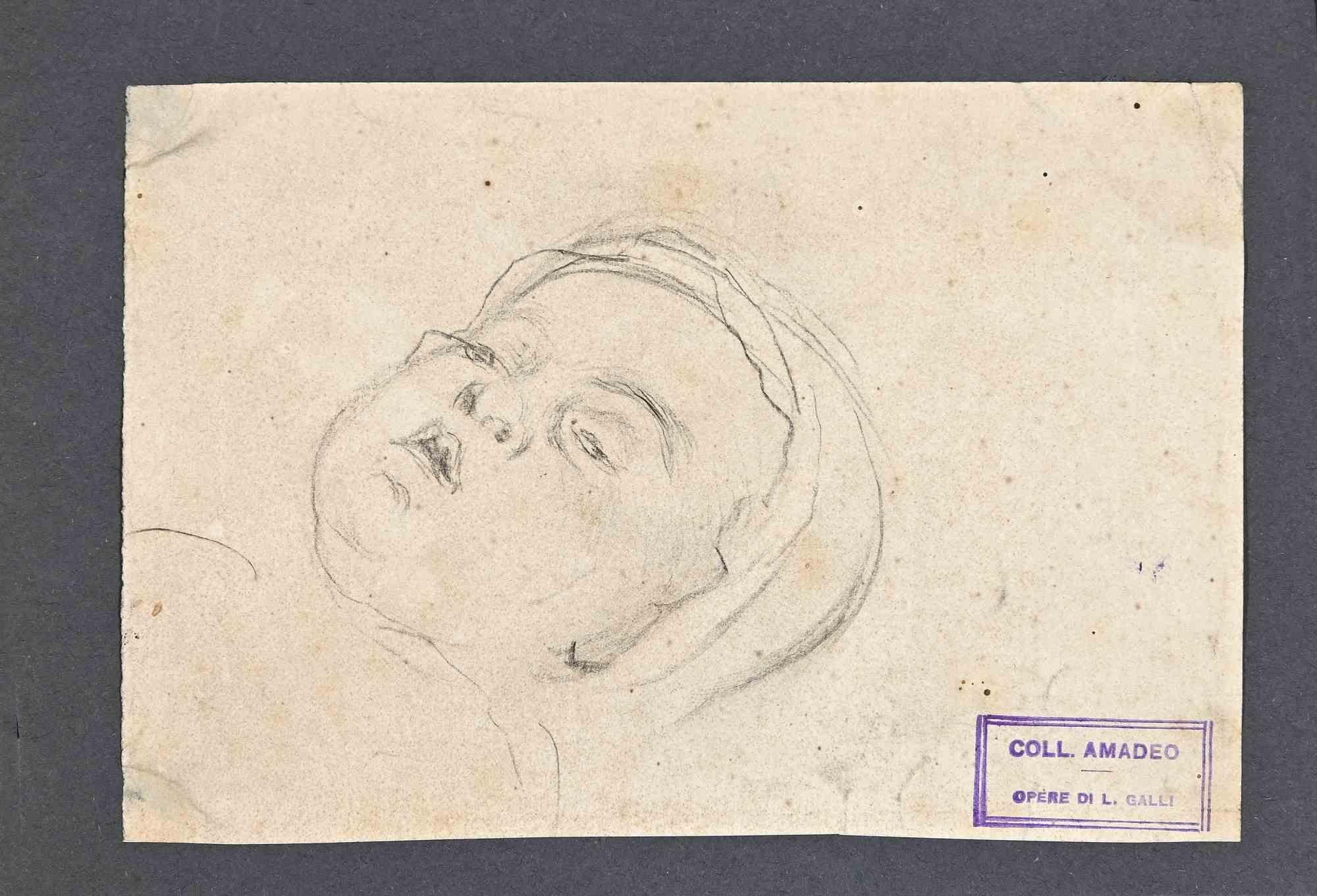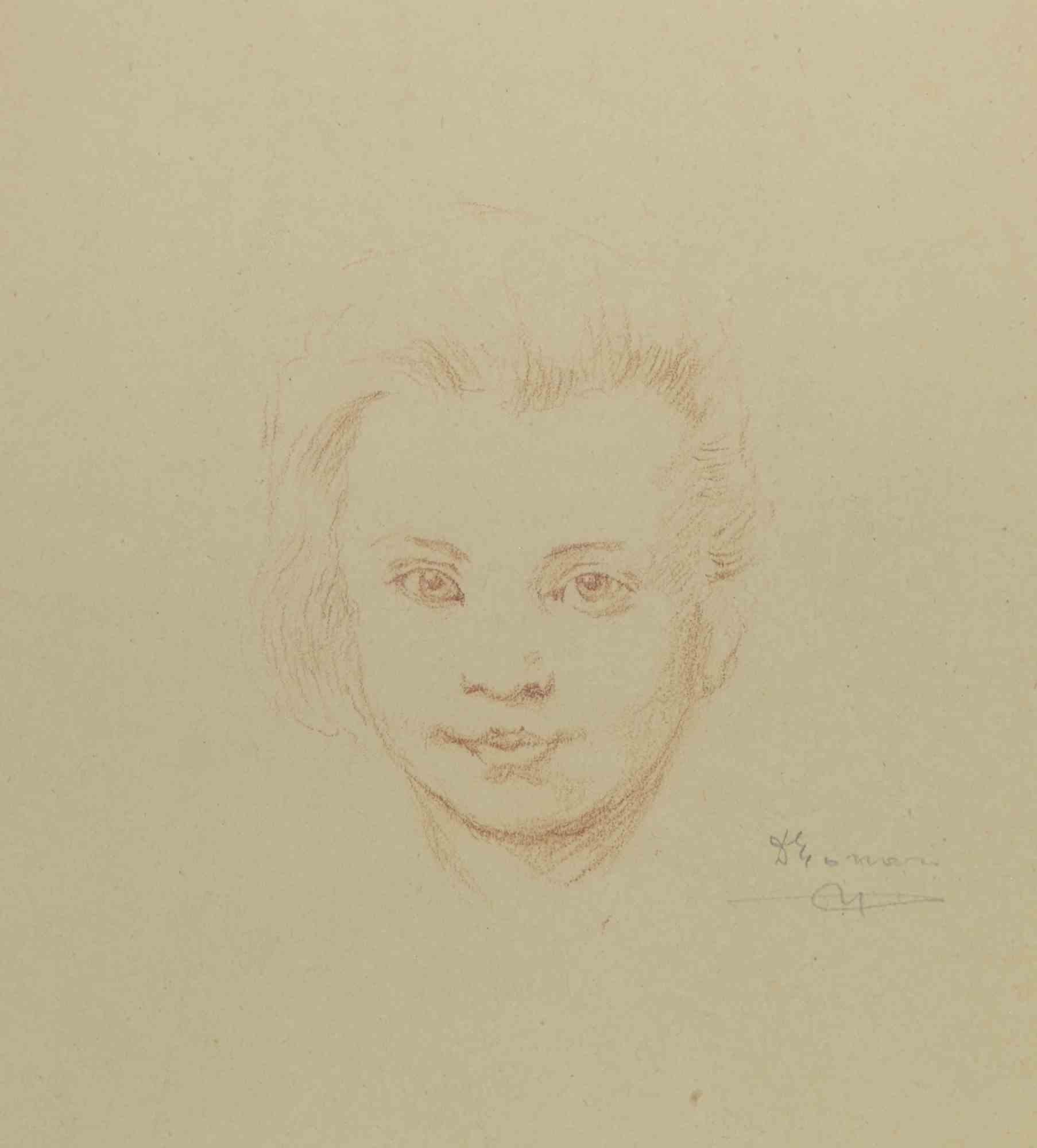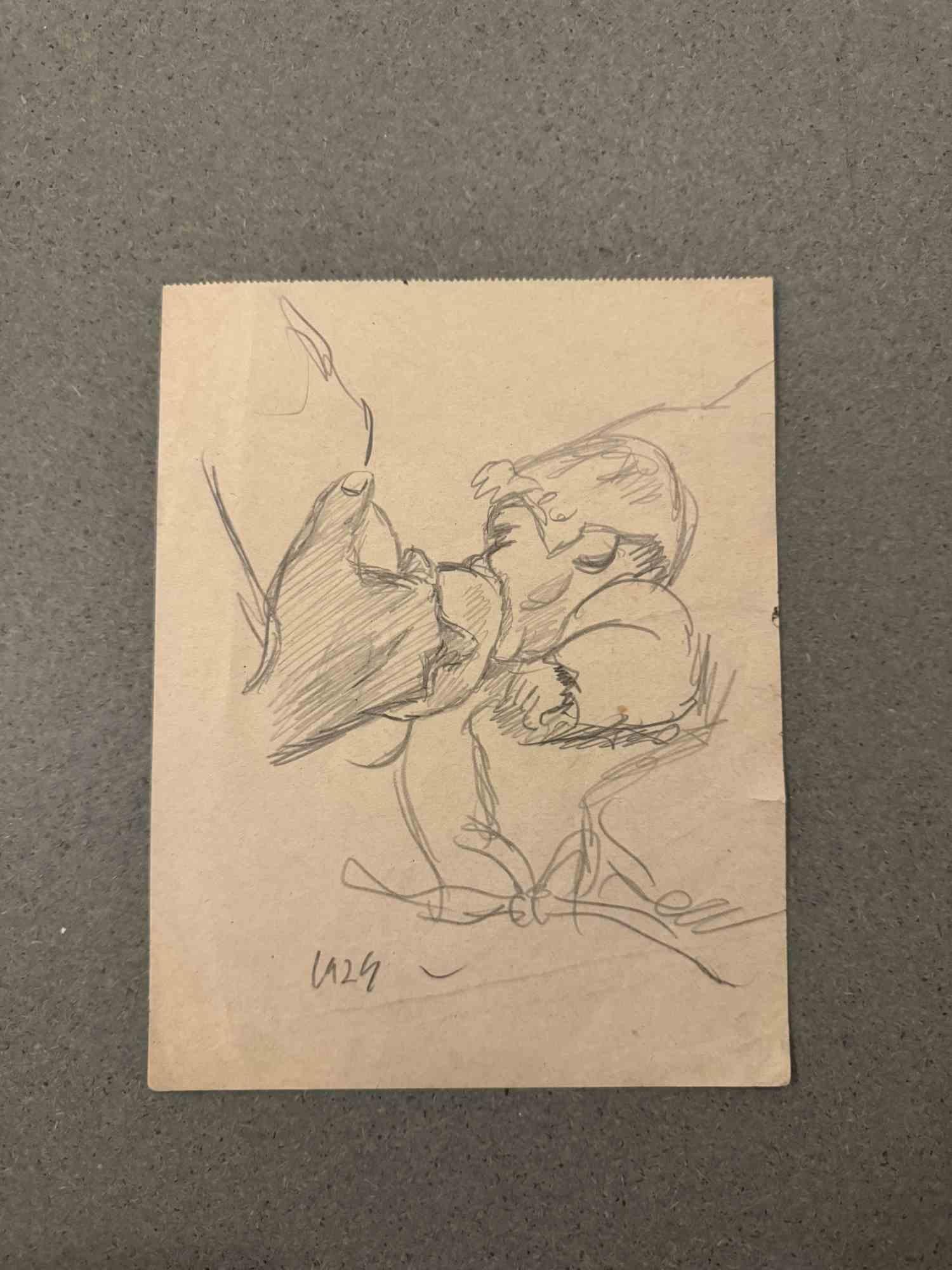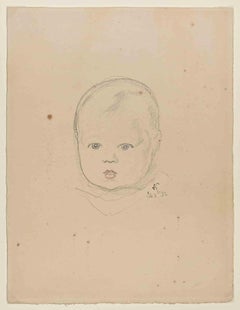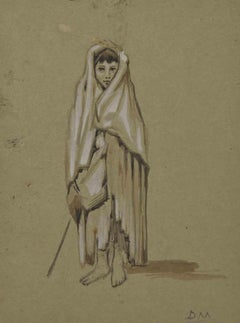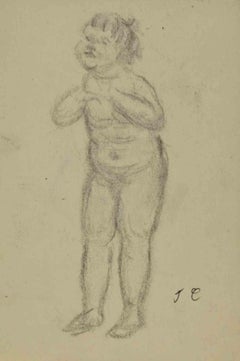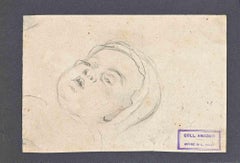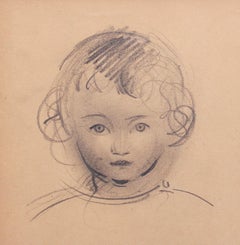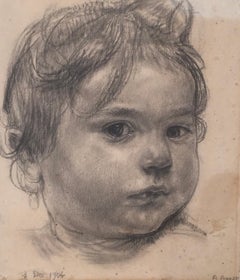Items Similar to The Baby - Drawing by Augusto Monari - Early 20th Century
Want more images or videos?
Request additional images or videos from the seller
1 of 2
Augusto MonariThe Baby - Drawing by Augusto Monari - Early 20th CenturyEarly-20th Century
Early-20th Century
$417.54
£308.65
€350
CA$579.15
A$631.40
CHF 333.62
MX$7,764.68
NOK 4,148.26
SEK 3,905.04
DKK 2,665.07
About the Item
The Baby is a Drawing in pencil, watercolor, and white lead realized by Augusto Monari in the Early-20th Century.
Hand-signed on the lower.
Good conditions, including a creamy-colored Passepartout.
The artwork is depicted through confident strokes in a well-balanced composition.
- Creator:Augusto Monari
- Creation Year:Early-20th Century
- Dimensions:Height: 6.7 in (17 cm)Width: 4.73 in (12 cm)Depth: 0.04 in (1 mm)
- Medium:
- Movement & Style:
- Period:
- Framing:Framing Options Available
- Condition:Insurance may be requested by customers as additional service, contact us for more information.a.
- Gallery Location:Roma, IT
- Reference Number:Seller: T-1408291stDibs: LU650312688622
About the Seller
4.9
Platinum Seller
Premium sellers with a 4.7+ rating and 24-hour response times
1stDibs seller since 2017
7,696 sales on 1stDibs
Typical response time: 3 hours
- ShippingRetrieving quote...Shipping from: Grasse, France
- Return Policy
Authenticity Guarantee
In the unlikely event there’s an issue with an item’s authenticity, contact us within 1 year for a full refund. DetailsMoney-Back Guarantee
If your item is not as described, is damaged in transit, or does not arrive, contact us within 7 days for a full refund. Details24-Hour Cancellation
You have a 24-hour grace period in which to reconsider your purchase, with no questions asked.Vetted Professional Sellers
Our world-class sellers must adhere to strict standards for service and quality, maintaining the integrity of our listings.Price-Match Guarantee
If you find that a seller listed the same item for a lower price elsewhere, we’ll match it.Trusted Global Delivery
Our best-in-class carrier network provides specialized shipping options worldwide, including custom delivery.More From This Seller
View AllChild - Drawing by Hermann Paul - Early 20th Century
Located in Roma, IT
Child is a pencil and pastel Drawing realized by Hermann Paul.
Dated "1916" on the lower right corner. Passpartout included cm 50x35
Good condition except some foxing .
René Georg...
Category
Early 20th Century Modern Figurative Drawings and Watercolors
Materials
Paper, Pastel, Pencil
The Boy - Drawing by Augusto Monari - Early 20th Century
Located in Roma, IT
The Boy is a Drawing in pencil, watercolor, and white lead realized by Augusto Monari in the Early-20th Century.
Monogrammed on the lower.
Good conditions, including a creamy-colo...
Category
Early 20th Century Modern Figurative Drawings and Watercolors
Materials
Watercolor, Pencil
Child - Drawing by Joseph Alexander Colin - Mid-20th Century
Located in Roma, IT
Child is a drawing realized by Joseph Colin in the Mid-20th Century.
Pencil on ivory-colored paper
Good conditions with slight foxing.
The artwork is realized through deft express...
Category
Mid-20th Century Modern Figurative Drawings and Watercolors
Materials
Pencil, Paper
The Baby - Drawing by Luigi Galli - Late 19th Century
Located in Roma, IT
The Baby is an original drawing in pencil, realized by Luigi Galli in the late 19th Century.
The status of preservation Good.
The artwork is depicted skillfully through confident a...
Category
Late 19th Century Modern Figurative Drawings and Watercolors
Materials
Pencil
Portrait - Drawing by Augusto Monari - Early 20th Century
Located in Roma, IT
Portrait is a Drawing in pencil realized by Augusto Monari in the Early-20th Century.
Hand-signed on the lower.
Good conditions, including a creamy-colored Passepartout.
The artw...
Category
Early 20th Century Modern Figurative Drawings and Watercolors
Materials
Pencil
Baby - Drawing by Mino Maccari - Mid-20th Century
By Mino Maccari
Located in Roma, IT
Baby is a pencil drawing realized by Mino Maccari (1924-1989) in the Mid-20th Century.
Hand-signed.
Good conditions with slight foxing.
Mino Maccari (Siena, 1924-Rome, June 16, 1...
Category
Mid-20th Century Modern Figurative Drawings and Watercolors
Materials
Paper, Pencil
You May Also Like
Portrait of a Young Child
By Guillaume Dulac
Located in London, GB
'Portrait of a Young Child', pencil on art paper, by French artist, Guillaume Dulac (circa 1920s). An artist known for his exquisite drawings - many are sketches for his larger oil p...
Category
1920s Portrait Drawings and Watercolors
Materials
Paper, Pencil
Portrait of a Baby
Located in Wilton Manors, FL
Violet Oakley (1896-1961).
Portrait of a Baby, ca. 1930.
Conte crayon and pencil on laid paper, sheet measuring 11 x 14 inches.
Framed measurement: 13.5 x 16.5 inches.
Signed low...
Category
1930s Realist Figurative Drawings and Watercolors
Materials
Conté, Laid Paper
Baby Boy - Original Charcoals Drawing
By Gustave Poetzsch
Located in Paris, IDF
Gustave Poetzsch (1870-1950)
Baby Boy
Original charcoals and pencil drawing
Stamp of the Estate auction sale on the back
On grey vellum 22 x 26 cm (c. 9 x 1...
Category
Early 1900s Realist Portrait Drawings and Watercolors
Materials
Charcoal, Pencil
Infant
Located in Genève, GE
Work on paper
Golden wooden frame with glass pane
36 x 37.5 x 2 cm
Category
Early 20th Century Portrait Drawings and Watercolors
Materials
Crayon
Portrait of a Young Girl
By Guillaume Dulac
Located in London, GB
'Portrait of a Young Girl', pencil on art paper, by French artist, Guillaume Dulac (circa 1920s). An artist known for his exquisite drawings - many are sketches for his larger oil pa...
Category
1920s Portrait Drawings and Watercolors
Materials
Paper, Pencil
Child - II, Modern Ink on Paper by Ira Moskowitz
By Ira Moskowitz
Located in Long Island City, NY
Ira Moskowitz, Polish/American (1912 - 2001) - Child - II, Year: circa 1989, Medium: Ink on Paper, signed, Size: 13 in. x 10 in. (33.02 cm x 25.4 cm), Description: Sitting cross-le...
Category
1980s Modern Portrait Drawings and Watercolors
Materials
Ink
More Ways To Browse
Charcoal Studies On Paper
Fairy Drawing
Vintage Vogue Illustrations
E Wilson
Old Master Drawing 16th
Clown Drawing
Encre De Chine
Fashion Drawing Art Deco
Original Boat Drawing
1939 Pen And Ink
Classic Painting And Drawing
Mark Tansey
Old Master Italian Drawings
Paper Cutting Art
Arab Drawing
Ballerina Drawing
Costume Design Watercolor
Jean Louis Ernest Meissonier
